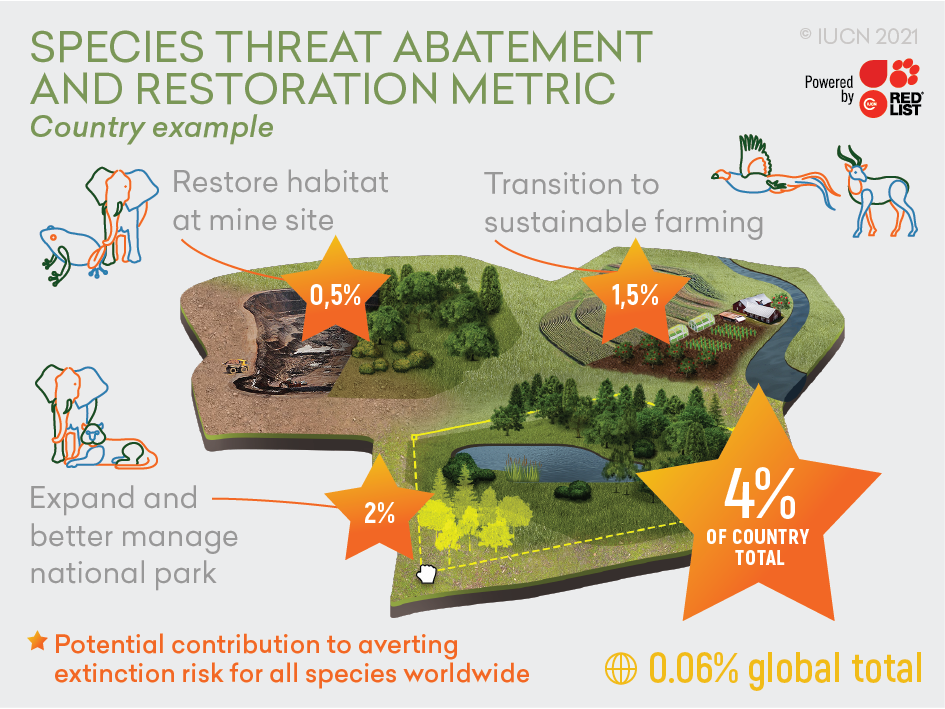How STAR works
The STAR metric assesses the potential of particular actions at specific locations to contribute to global sustainability targets, supporting science-based targets for species biodiversity.
The Species Threat Abatement and Restoration (STAR) metric measures the contribution that investments can make to reducing species’ extinction risk. It helps governments, cities, civil society, the finance industry, investors and companies to target their investments and activities to achieve conservation outcomes and contribute to global policy aims.

threatened and Near Threatened species’ data incorporated into STAR
of global extinction risk reduction could be achieved by increasing sustainability in crop production
of global extinction risk reduction could be achieved by restoring habitats
The STAR metric assesses the potential of particular actions at specific locations to contribute to global sustainability targets, supporting science-based targets for species biodiversity.
STAR measures the potential contribution of two kinds of action to reduce species extinction risk:
This makes it possible to identify actions that will yield benefits for threatened species, and enables actors to add up their total contributions to preventing biodiversity loss.

Species Threat Abatement and Restoration (STAR) metric
The method for calculating STAR is in the public domain. Any actor can apply the STAR metric to any location, using data on the distribution, threats and extinction risk of threatened species.
The post-2020 Global Biodiversity Framework seeks to identify specific actions that will improve the overall state of biodiversity. STAR provides a way to measure how reducing threats in a particular place can decrease overall extinction risk, linking proposed actions to achieving the Convention's vision of living in harmony with nature.
Executive Secretary of the Convention on Biological Diversity
The scientific basis for STAR was established in ‘Measuring spatially-explicit contributions to science-based species targets’, published in Nature Ecology & Evolution. The metric bases its scores on data from the IUCN Red List of Threatened Species. Further research is underway to extend the application of STAR to aquatic environments, to account for threats embodied in international trade and to harness National Red List data for nationally threatened species.

Governments, businesses, civil society, or any other actor can use STAR to quantify the potential impact of their actions on reducing species extinction risk. National governments can use it to set baselines for measuring progress towards global biodiversity targets, and conservation agencies can use it to identify gaps and target conservation efforts. The private and financial sectors can use STAR to document and disclose biodiversity risk.
The IUCN Species Survival Commission Post-2020 Taskforce, hosted by the University of Newcastle, led the development of STAR. Collaborators from more than 50 organisations around the world contributed to the Nature Ecology & Evolution paper.
The STAR metric is available through the Integrated Biodiversity Assessment Tool (IBAT), a partnership of IUCN, BirdLife International, Conservation International, and UNEP-WCMC. The STAR metric is maintained under the authority of the IUCN Red List Committee.
We acknowledge funding from the Luc Hoffmann Institute, Vulcan, Synchronicity Earth and the Global Environment Facility, as well as support from the Conservation International GEF Project Agency. The Biodiversity Consultancy pioneered the tool’s private sector applications.
Related resources




